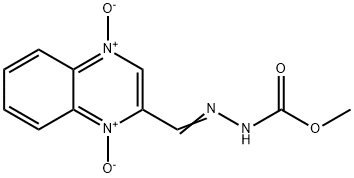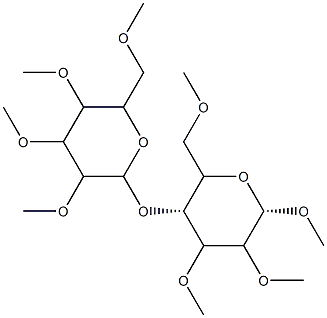A2371812
Carbadox , Analysis standard , 6804-07-5
Synonym(s):
3-(2-Quinoxalinylmethylene)carbazic acid methyl ester N,N′-dioxide
CAS NO.:6804-07-5
Empirical Formula: C11H10N4O4
Molecular Weight: 262.22
MDL number: MFCD00057293
EINECS: 229-879-0
| Pack Size | Price | Stock | Quantity |
| 100MG | RMB535.20 | In Stock |
|
| others | Enquire |
Update time: 2022-07-08
PRODUCT Properties
| Melting point: | 239-240°C |
| Boiling point: | 405.47°C (rough estimate) |
| Density | 1.3602 (rough estimate) |
| refractive index | 1.6000 (estimate) |
| Flash point: | 18°(64°F) |
| storage temp. | 2-8°C |
| solubility | DMSO (Slightly, Sonicated) |
| form | powder |
| pka | 10.51±0.46(Predicted) |
| color | Yellow to Dark Yellow |
| Water Solubility | Soluble in 1N NaOH (50 mg/ml), and water (partly). |
| Stability: | Light Sensitive |
| CAS DataBase Reference | 6804-07-5 |
| EPA Substance Registry System | Hydrazinecarboxylic acid, 2-[(1,4-dioxido-2-quinoxalinyl)methylene]-, methyl ester (6804-07-5) |
Description and Uses
Carbadox has been used to suppress aldosterone production, to study the spread of shiga toxin-producing Escherichia coli (STEC) strains, and to compare different antimicrobial activities. Carbadox is a quinoxaline-di-N-oxide antibiotic that is generally used in feed to swine to prevent dysentery and improve feed efficiency. It inhibits bacteria by intercalation and induction of mutations in bacterial genome.
Safety
| Symbol(GHS) |    GHS02,GHS07,GHS08 |
| Signal word | Danger |
| Hazard statements | H228-H302-H350 |
| Precautionary statements | P201-P210-P240-P280-P405-P501a |
| Hazard Codes | F,T |
| Risk Statements | 45-11-22 |
| Safety Statements | 53-45 |
| RIDADR | UN 1325 4.1/PG 2 |
| WGK Germany | 3 |
| RTECS | FE2779000 |
| HazardClass | 4.1 |
| HS Code | 29339900 |
| Hazardous Substances Data | 6804-07-5(Hazardous Substances Data) |


